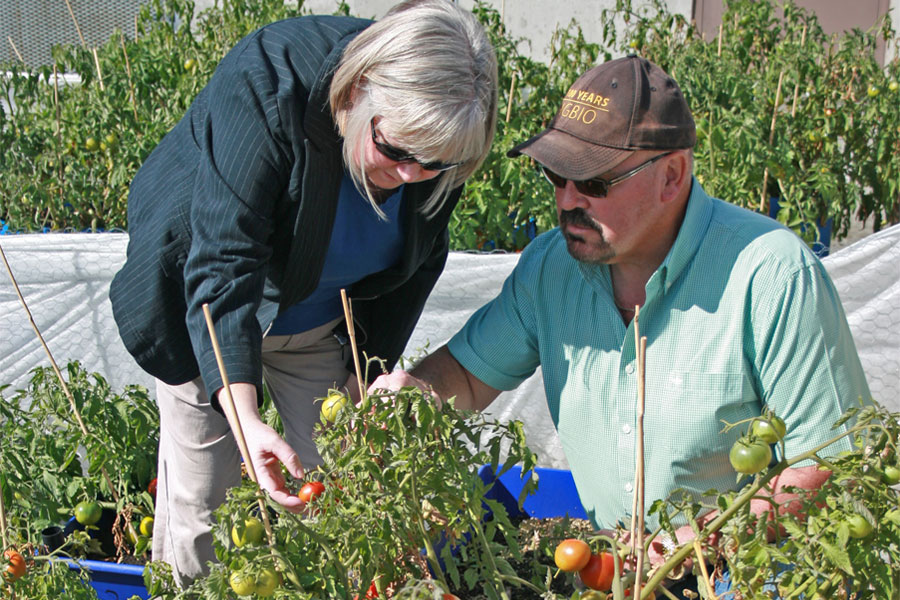Garden in the sky
“You can never have too many tomatoes,” said Grant Wood, aghast that anyone would suggest otherwise. “You cut them up, put them in zip-lock bags, and freeze them. Then you pull them out as you need them, add some chickpeas and make curry.”
By Michael Robin It seems there will be much curry made this year, due to the healthy tomato harvest from a research garden on the top of the Stadium Parkade. The garden is a joint effort between Wood, assistant professor in the Department of Plant Sciences, and Diane Knight, professor in the Department of Soil Sciences, and is aimed at exploring low-cost urban food production.
It seems there will be much curry made this year, due to the healthy tomato harvest from a research garden on the top of the Stadium Parkade. The garden is a joint effort between Wood, assistant professor in the Department of Plant Sciences, and Diane Knight, professor in the Department of Soil Sciences, and is aimed at exploring low-cost urban food production.
"Low cost" is apparent in every part of the garden. Some containers are blue plastic drums, bought for $5 each from a local food ingredient manufacturer. These are cut in half and filled with a soilless mixture. Other containers are 20-litre pails obtained free from Culinary Services. Most expensive are purpose-built square plastic containers bought from a local store. The whole setup sits on pallets donated by the Facilities Management Division.
Knight explained the containers have a few embellishments, like bits of tubing and drainage holes for a "self watering" system. The half barrels, with their higher soil volumes, do not dry out as quickly and hence no not need the tubes, but drainage holes are still required.
"We were trying to make a cheap homemade version out of easily accessible materials, pails and whatnot," she said. "We did everything as cheaply as we could. We wanted to demonstrate that anybody could do it." The difference in cost is striking: $60 per container for the purpose-built square containers, versus $2.50 each for the half-barrels, and free for the pails.
Judging by plant performance, the homemade system wins hands down. Lush, fruit-laden plants in the barrels and pails contrast with much smaller plants and a few fruit in the more expensive plastic boxes.
This is good news for the researchers, whose ultimate aim is to transfer what they learn into local food production wherever there are willing hands, plentiful sun and a source of water. This could be on apartment balconies, back or front yards, vacant lots or even "brownfield" sites where the local soil is, or is suspected of being, contaminated. Since the system sits on pallets, whole gardens can be relocated if needed, and vacant land can be made not only productive, but made into gathering places to build community as people work together on their gardens.
"We take food for granted," Wood said, confessing a personal passion for food production and the empowerment it brings. "My international travels, my work in local food security and my friendships with international students really drive this point home. There are many, many social, cultural, community and personal benefits from urban food production."
Judging by the demand for his course, Urban Food Production, it's a message that resonates with students. Wood developed the course to help students understand "why we should be growing more food locally, and then … how to grow food." Enrolment has quadrupled from 20 to 80, drawing students from four colleges.
Wood and Knight are working with community groups like CHEP Good Food Inc. and with a green roof specialist on the pallet-container garden system. Inspired by Sole Food Farms in Vancouver, where inner city people grow fresh produce for their own use and for sale, Wood's students have written a proposal to help the idea take root in Saskatoon.
"So fingers crossed. We're going to city council before next spring to get permission to use two lots on 20th Street," Wood said.
Back at the office, there is a bag of fresh tomatoes on the chair, together with a recipe. There are never too many tomatoes, it seems.

